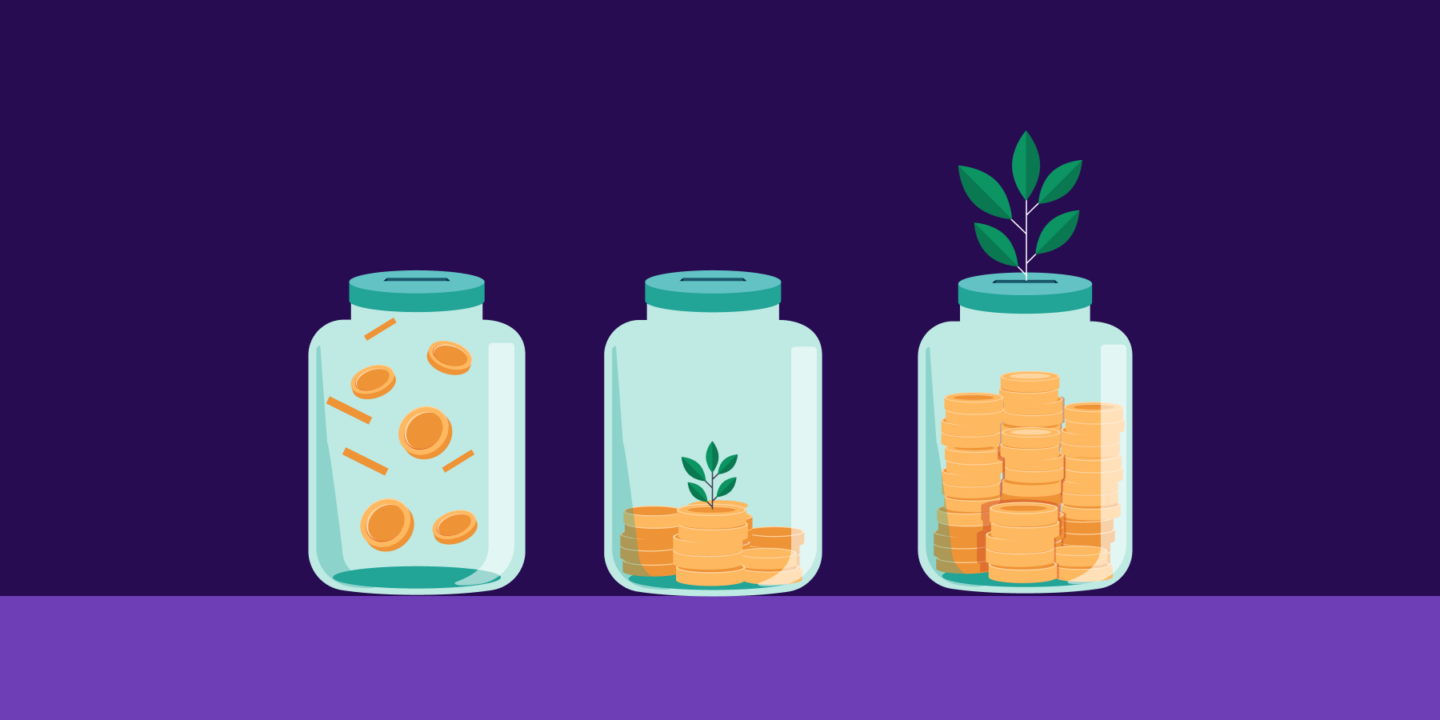
“If you do not find a way to make money while you sleep, you will work until you die.”
There is a popular phrase floating around on the internet.
People claim that Warren Buffett said this. Well, I don’t know if he said it, but I am sure about one thing. The essence of this quote is accurate. Investing is an effective approach to making money while you sleep. Holding on to cash might have worked during your grandparent’s time but not anymore.
Whether you aim to send your child to college or to retire near the beach, investing is an essential strategy to meet your goals. If done wisely, it can even build you a fortune.
Still not convinced?
We are here to help you understand the importance of investment, its benefits, and the different types of investment products in the market. Buckle up and read on.
What Is an Investment?
Let’s start with the basics by defining the term ‘Investment.’
An investment is the allocation of money to buy a financial asset(s) to generate returns or income over time. Some examples of assets include equity, bond, fixed-income securities, cryptocurrency, etc.
In other words, investment means setting aside your savings to buy financial products to help you grow your money. For instance, we purchase goods or services to consume or use them. But, in the case of investments, one of the key objectives is to generate wealth for our future selves.
What Are the Different Types of Investment Options?
Luckily, there are many avenues for making investments. You can pick a suitable one based on factors like investment goals, timeframe, risk tolerance, etc. We will cover these factors later in detail.
But now, let’s look into the popular types of investment products.
1. Fixed deposits
Banks and Non-Banking Financial Companies (NBFCs) offer fixed deposits (FDs). FDs provide higher returns than regular savings accounts.
Compared to NBFCs, bank FD is one of the safest options in the market. It carries insurance coverage of up to INR 5 lakhs (for both principal and interest). The tenure ranges from seven days to ten years, and the annual interest rate falls between 2.5% to 6.5%.
2. Public Provident Fund
Public Provident Fund (PPF) is a fixed-income instrument backed by the Government of India. PPF has a 15-year lock-in period, and the interest rates are subject to quarterly updates. Currently, the interest rate stands at 7.1% per annum. You can claim tax deductions for up to INR 1.5 lakh under section 80C of the IT Act by investing in PPF.
3. Senior Citizens’ Savings Scheme
Senior Citizen’s Savings Scheme (SCSS) was launched to provide a steady income source for individuals over the age of 60. SCSS has a 5-year lock-in period and offers a fixed return of 7.4% per annum. Also, it has tax benefits under section 80C.
4. National Pension Scheme
National Pension Scheme (NPS) is a long-term investment product backed by the Government of India. The investment amount is allocated across different instruments like equity, debt, and alternative funds. The return from NPS ranges from 9 to 12% per annum.
5. Bonds
Bonds refer to loans offered by investors to borrowers. Bonds are fixed-income investments, as the bond investors receive interest payments at regular intervals. Also, they receive their original principal back when the bond matures.
6. Stocks/equities
Investing in the equity market involves purchasing stocks of companies. It has the potential to generate significant returns over an extended timeframe. But it requires the investor to be knowledgeable about market conditions. Needless to say, there is also scope for a negative rate of return as the performance is market linked.
7. Mutual funds
Mutual funds pool the money from investors to invest in a portfolio of equity, debt, or other securities.
There are two types of mutual funds — active and passive funds. Active funds involve a team of investment professionals who ‘actively’ research, analyze and choose the securities. In contrast, passive funds are not actively managed. Index funds are considered passive funds.
8. Real estate
You can purchase tangible assets like residential or commercial properties for capital appreciation. Also, it can give a regular income flow in the form of rent.
But if you don’t want to invest in ‘physical’ real estate, there is another option for you. You can invest in Real Estate Investment Trusts (REIT). REIT refers to organizations that own or finance real estate properties like office space, warehouses, hospitals, and so on. Investors can park their money in REITs and, in return, receive rental income from these properties. Additional benefits include liquidity, safety, and affordability.
9. Commodities
Gold is a popular commodity. It exists in both physical (gold bars, jewelry) and digital (sovereign gold bond, gold ETF) forms.
Other well-known commodities include crude oil, natural gas, metals, agricultural products, etc. The returns can be negative or positive as they are linked to market performance.
10. Cryptocurrency
Cryptocurrency is a blockchain-based digital asset that focuses on various use cases like gaming, peer-to-peer payment solutions, lending, etc.
Like stocks and bonds, cryptos have transformed into a well-known asset class. Some top cryptocurrencies include Bitcoin, Ethereum, Solana, and Cardano.
What Are the 5 Benefits of Investment?
Many beginners question if investing is needed at all. But, considering the current macroeconomic condition, it has become a necessity rather than a luxury.
While the goal of investing can vary across individuals, the following benefits apply to almost everyone.
1. Hedge against inflation
If you ask us for one solid reason to invest? It’s ‘inflation.’
In India, an item that used to cost INR 100 in 1960 will be around INR 7800 in 2022. Overall, a price increase of 7,700% with an average inflation rate of 7.5% between 1960 and 2022. Rising inflation can bring down the value of money. It means we need more money to buy the same goods/services in the future.
Luckily, investing can prevent our money from getting eroded.
2. Financial freedom
Not many of us are prepared to live stress-free lives after retirement. The HSBC Future of Retirement Study reveals that around 7 out of 10 Indians expect their children to support them in their retirement financially.
Well, that’s not an ideal position to be in. Thus, investing a portion of your income during the early years is the way to go.
3. Passive income source
Most of us rely on our jobs to manage our day-to-day expenses. But is it safe? Absolutely not due to the decreasing job security.
Therefore, it’s essential to have at least one more source of income, especially a passive one. Investing is one such lucrative avenue to generate passive income. It enables your money to make more money.
4. Helps to follow your passion
A lot of problems in life are finance-related. Due to financial and familial obligations, we take up a job that often doesn’t match our interests.
We all have a passion that we want to pursue. Investing can help you meet your obligations so that you can spend enough time pursuing your passion.
5. Tax benefits
Last but not least. Tax benefits are another crucial advantage of investing.
Various investment instruments like PPF, ULIP, ELSS, and deposit schemes offer tax benefits under different sections of the IT Act of India. This allows us to improve our net investment returns by reducing the tax burden.
5 Things to Consider Before Investing Your Money
Below are five critical factors to consider before diving into the investment world.
1. Investment objective
Each of us has different needs and likings. It can be anything like going on a vacation, buying a car, saving for our child’s education, etc. Having an objective can give you enough motivation and clarity to start your investment journey.
2. Investment timeframe
Once you have determined your investment goals, you need to decide the time required to achieve them. For instance, if you want to purchase a residential property in the next ten years, you have to invest in a way to get the needed amount within ten years.
The investment time frame can be divided into three categories — short-term (less than three years), mid-term (3 to 7 years), and long-term (more than seven years).
3. Risk appetite
Different investment products offer varying returns and risk levels. For example, high-return products like stocks are often associated with high risk. In contrast, fixed-return products like bank FDs have a high safety net.
Thus, choose the product wisely based on your risk appetite. Investing in something above your risk tolerance level is not advisable, as you might not be able to handle the volatility.
4. Financial products
Once the investment goal, timeframe, and risk appetite are figured out, the next question is which product to invest in.
For example, suppose you need the amount by the year’s end for handling short-term goals like children’s annual school fees. In that case, you can opt for products like FDs, which will give the necessary amount with certainty. On the other hand, suppose you are investing to handle your post-retirement life, which is 20 years away. Long-term assets like equity or cryptocurrency can be a good bet, as there is enough time to ride the highs and lows of the market.
5. Asset allocation
Each investment product has its own market cycle. For instance, the stock market could perform well during the bull run, making instruments like FDs less attractive. But, during a market crash, people turn to fixed-income assets to safeguard their portfolios. Hence, having a mix of these products in your portfolio will ensure that investments are well-cushioned irrespective of the market condition.
As a standard practice, you can follow ‘The 120 Rule’. As per this rule, you should subtract your current age from 120, then put the difference in risky asset classes in stocks and cryptos. The rest goes into ‘safe’ instruments like bonds and fixed-income securities.
Conclusion
Congratulations if you have reached here. We have some good news for you. You don’t need a large sum of capital to start investing. You can begin with a minimal amount and slowly build your momentum.
Below are some examples of financial products and their minimum fund requirement.
1. Mutual Fund = INR 100
2. Public Provident Fund = INR 500
3. Fixed Deposit = INR 1000
As you notice, it doesn’t take much to kickstart the journey. Of course, we agree that investing carries different risks. But the biggest risk of them all is not taking one.
FAQs
1. At what age should I start investing?
There is no one specific age to begin investing. Ideally, you should start as early as possible. We understand that your salary might not be high during the initial stage of your career. But still, you can be way ahead of your peers even if you start with a small sum of money and then increase periodically.
Starting early helps you reap the benefits of compounding over a longer duration.
2. What is the Rule of 120?
The Rule of 120 helps in asset allocation. It assumes that younger individuals can take more risks than older folks.
The rule states that you should subtract your current age from 120, then put the difference in risky asset classes like stocks or cryptos. The rest goes into ‘safe’ instruments like bonds or fixed-income securities.
3. What are the factors to consider before investing?
You need to think about five critical factors before starting your investment journey.
- Investment Objective: What goals are you trying to achieve by investing? There can be multiple goals like short-term needs, house purchase, retirement, etc. at the same time.
- Investment Timeframe: When are you planning to achieve your goal? It can be either short-term, mid-term, or long-term.
- Risk Appetite: What is your level of risk tolerance? It can be high, medium, or low.
- Financial Products: What financial instruments are you looking to invest in? There are many asset classes, like equity, bond, crypto, gold, real estate, etc.
- Asset Allocation: What is the proportion of asset classes inside your investment portfolio? The younger you are, the more riskier assets you can pick.




